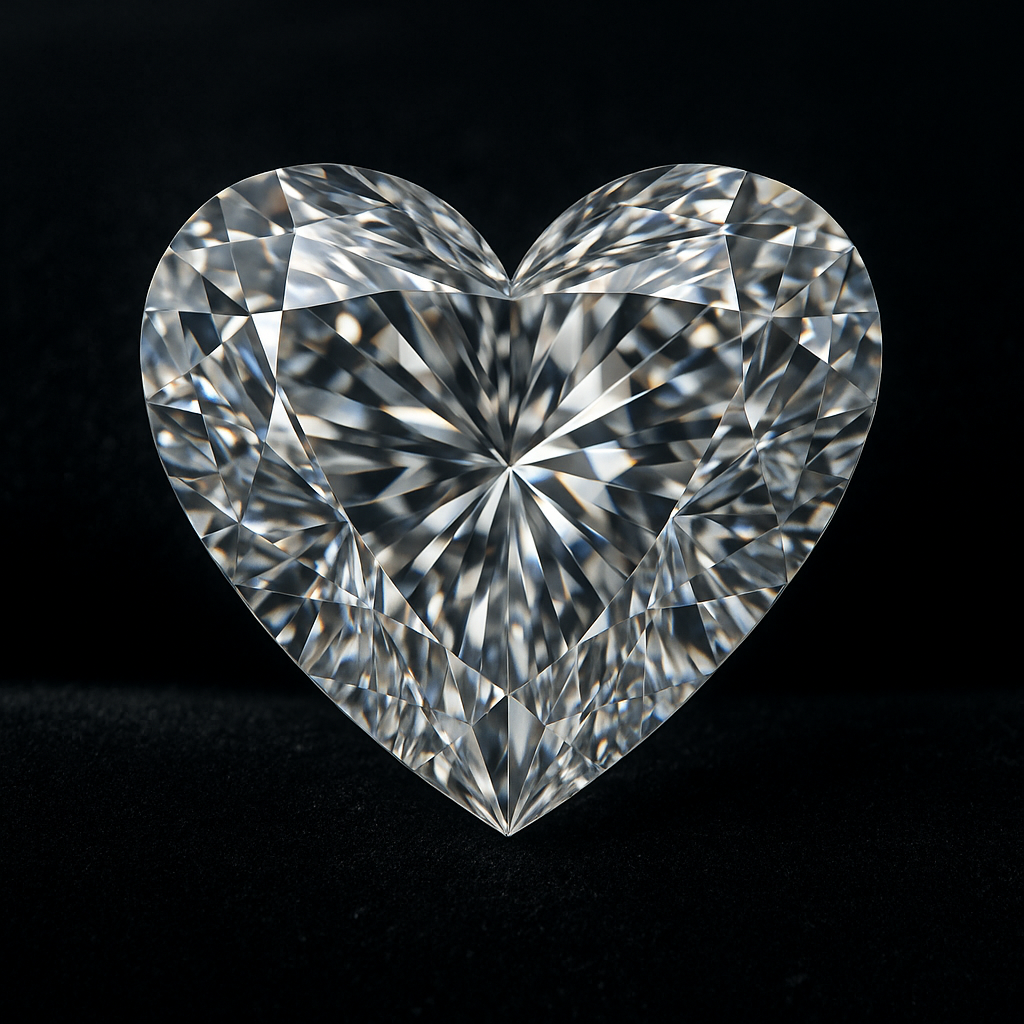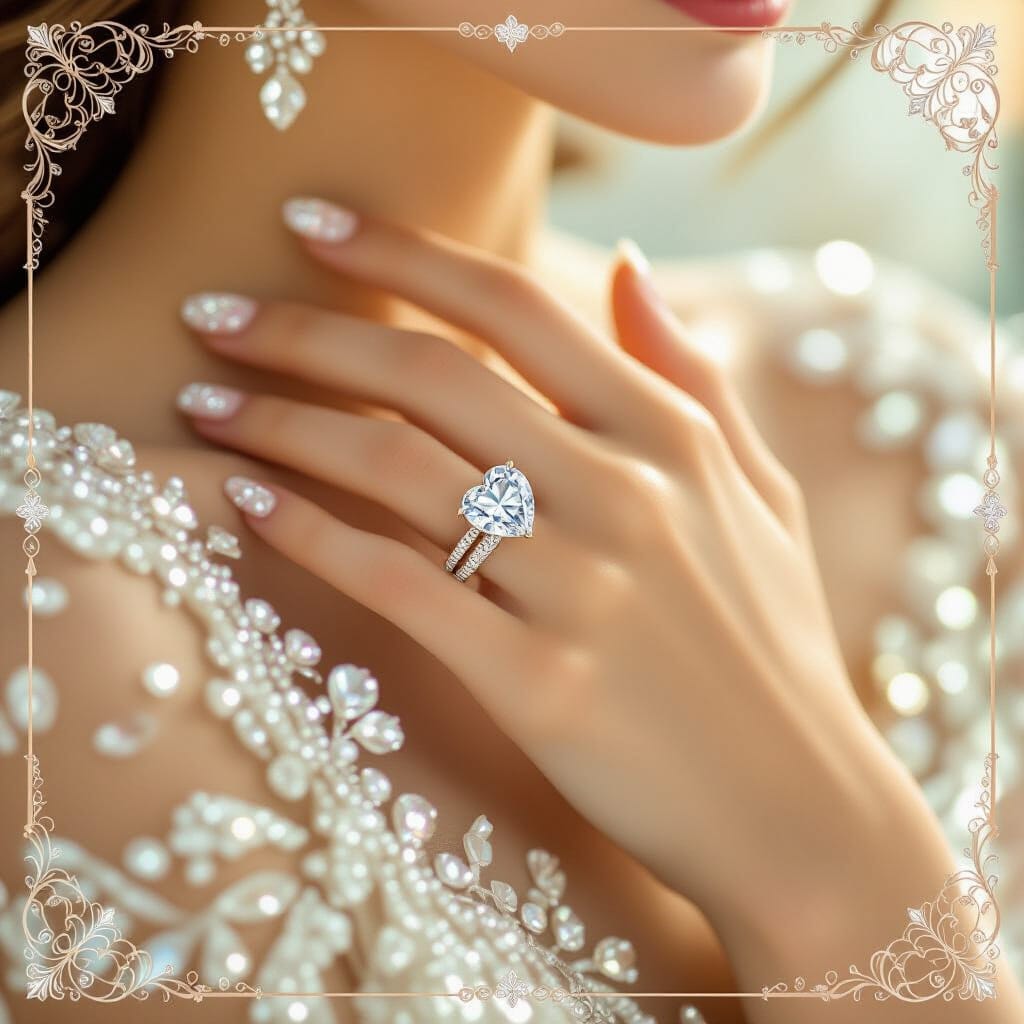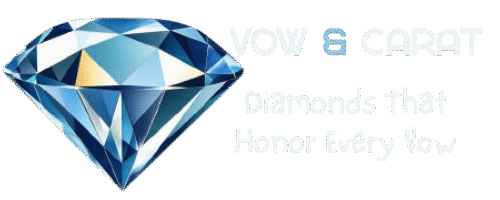Heart Cut Diamonds: The Complete Guide to Romance, Symbolism & Sparkling Love

🌟Why Heart Diamonds Are the Ultimate Symbol of Love
Of all diamond shapes, none capture romance and symbolism as perfectly as the heart cut diamond. With its unmistakable silhouette, the heart is a bold statement of passion, affection, and devotion.
Loved by romantics and trendsetters alike, heart diamonds are unique, eye-catching, and deeply meaningful. From pendants gifted as tokens of love to engagement rings that declare a fairytale romance, the heart cut diamond is the most personal and expressive of them all.
In this guide, we’ll explore everything about heart-shaped diamonds: their history, symbolism, design details, the 4Cs, buying tips, celebrity examples, myths, FAQs, and why this shape remains the ultimate emblem of everlasting love.
Enthusiastic to get your next exceptional heart cut engagement ring? Read Our Top Online Diamond Retailers Ultimate Guide.
📜 A Romantic History of Heart Diamonds
🔹 Renaissance Origins
The heart shape has been associated with love since medieval times. The earliest recorded heart-shaped diamond dates back to 1463, when the Duke of Milan sent one to the Duke of Florence as a gift of goodwill.
🔹 Royal Symbolism
By the 16th century, heart diamonds became associated with royalty. Mary, Queen of Scots, famously sent a heart-shaped diamond ring to Queen Elizabeth I as a gesture of friendship.
🔹 Modern Popularity
In the 20th and 21st centuries, heart-shaped diamonds became popular in both engagement rings and statement jewelry, symbolizing passion and individuality.
💡 Real-World Example: Lady Gaga’s engagement ring from Taylor Kinney (2015) featured a stunning 6ct heart-shaped diamond, instantly propelling the cut into pop culture spotlight.
Helpful Guide: The Best Online Jeweler – Is James Allen Legit?
💡 What Makes Heart Diamonds Unique?
Heart diamonds are both technically challenging and emotionally powerful.
- Shape: A rounded body with a distinct cleft and two symmetrical lobes forming the heart.
- Symbolism: Universally recognized as the shape of love.
- Brilliance: Belongs to the brilliant-cut family (typically 56–58 facets).
- Rarity: Less common than rounds or ovals, ensuring uniqueness.
- Impact: Bold and expressive, ideal for romantic personalities.
📊 Fun Fact: Heart cuts are among the hardest to perfect. Achieving ideal symmetry between the two lobes requires extraordinary skill.
Compare our Two Top Engagement Ring Vendors.
🔍 The 4Cs of Heart Diamonds
1. ✂️ Cut: Symmetry is Key
Cut determines whether a heart diamond looks charming or awkward.
- Symmetry: Both lobes must be identical in size and shape.
- Cleft: The V-shaped cleft should be sharp and distinct, not shallow.
- Length-to-Width Ratio:
- Classic heart → 0.90–1.10
- Narrow hearts → Ratios above 1.10
- Wider hearts → Ratios below 0.90
- Minimum Size: Hearts under 0.50ct often lose definition; 1.0ct+ recommended.
💡 Pro Tip: Always view heart diamonds in person or in 360° video — photos often don’t capture symmetry accurately.
2. 🎨 Color: Hearts Show Warmth
Hearts display color slightly more than rounds due to larger open areas.
- Best Range: G–H for white metals.
- Warmer Metals: I–J blend beautifully in yellow or rose gold.
- Fancy Colors: Heart shapes are popular for fancy pinks, yellows, and blues, emphasizing romance.
3. 🔍 Clarity: Larger Table = More Visibility
Hearts hide inclusions fairly well, but clarity still matters.
- VS2 or SI1 often appear eye-clean.
- Avoid inclusions in the center or cleft, where they’re most visible.
- Excellent polish is crucial for crisp outline.
4. 💎 Carat: Hearts Need Size for Impact
Because of their complex shape, smaller hearts lose definition.
- Best seen at 1.0ct+, where the lobes and cleft are clear.
- A 1.0ct heart usually faces up smaller than a 1.0ct round — but makes up for it in symbolic impact.
💡 Example: A client chose a 1.25ct G VS2 heart diamond for a solitaire engagement ring, which looked dramatic and meaningful despite facing up slightly smaller than a 1.25ct round.
💍 Heart Diamonds in Engagement Rings
Heart-shaped diamonds are bold, romantic, and perfect for statement rings.

Popular Settings:
- Solitaire: Highlights the symbolic shape.
- Halo: Adds sparkle and enhances the outline.
- Three-Stone: Heart flanked by pear or trillion side stones.
- East-West: A modern twist, setting the heart horizontally.
Celebrity Inspiration:
- Lady Gaga → 6ct heart solitaire.
- Nicki Minaj → Yellow heart-shaped diamond engagement ring.
- Chloë Grace Moretz → Wore a heart diamond pendant from Brooklyn Beckham.
🏆 Advantages of Heart Diamonds
- Ultimate romance symbol → perfect for sentimental buyers.
- Unique shape → far less common than rounds.
- Brilliance & fire → brilliant-cut faceting ensures sparkle.
- Expressive design → bold, eye-catching, and personal.
- Versatile jewelry → ideal for rings, pendants, and earrings.
⚖️ Heart vs. Other Shapes
| Feature | Heart Diamond | Round Diamond | Oval Diamond | Princess Diamond |
|---|---|---|---|---|
| Brilliance | ⭐⭐⭐⭐ | ⭐⭐⭐⭐⭐ | ⭐⭐⭐⭐ | ⭐⭐⭐⭐ |
| Symbolism | ⭐⭐⭐⭐⭐ | ⭐⭐ | ⭐⭐ | ⭐⭐ |
| Uniqueness | ⭐⭐⭐⭐⭐ | ⭐⭐ | ⭐⭐⭐ | ⭐⭐⭐ |
| Price Premium | Medium | High | Medium | Low |
💰 Pricing & Smart Buying Tips
Heart diamonds cost less than rounds but more than princess or cushions.
Tips for Best Value:
- Buy at least 1.0ct for shape definition.
- Stick to G–H color and VS2 clarity for balance.
- Choose Excellent symmetry.
- Consider lab-grown hearts for savings.
🌍 Ethical & Sustainable Hearts
- Lab-Grown Hearts: Affordable, real, and eco-friendly.
- Vintage Hearts: Rare but sustainable and charming.
- Conflict-Free: Kimberley-certified mined diamonds.
Which Diamond Certification is the best Choice? Read Our In-depth guide here.
🎯 Advanced Tips
- Orientation: Tip up for engagement rings, tip down for pendants.
- Prongs: Use V-prongs on the cleft and tip for security.
- Band Choice: Slim bands enhance the heart’s bold outline.
❓ Extended FAQ on Heart Cut Diamonds
1. Do heart diamonds sparkle as much as rounds?
Yes — both are brilliant cuts designed to maximize light return. However, because the heart shape has clefts, lobes, and a pointed tip, light is dispersed differently. This makes them slightly less fiery than rounds, though still very dazzling.
2. Do hearts look bigger than rounds?
No — hearts usually face up smaller for the same carat weight. The cleft and curves reduce surface area compared to a round, but their dramatic outline makes them appear more striking.
3. What’s the ideal size for a heart diamond?
1.0ct or larger is recommended, as the shape’s definition (lobes and cleft) can be lost in smaller sizes. Larger stones make the heart unmistakably recognizable.
4. What clarity is best?
VS2 or higher ensures that inclusions don’t interfere with brilliance or distract from the stone’s symmetry. Hearts have open facets where flaws can be noticeable.
5. Do hearts show color more?
Yes — color tends to concentrate near the tip and lobes. Opting for a higher color grade (G or above) is ideal, especially if set in white metals.
6. Are hearts fragile?
Yes — the pointed tip is the most vulnerable part, prone to chipping. A protective V-prong is essential for durability in rings.
7. Are hearts vintage or modern?
Both — heart-shaped diamonds date back to the 1400s, admired by royalty, yet they remain a bold and modern choice today. Their history makes them timeless.
8. Do hearts flatter all hands?
Yes — though they make the boldest impact when cut in medium-to-large carats. Their unique silhouette can elongate fingers when set vertically.
9. Are lab-grown hearts real?
Yes — lab-grown diamonds are chemically and optically identical to mined stones. A heart-shaped lab diamond offers the same sparkle with added affordability and sustainability.
10. Do hearts cost less than rounds?
Yes — typically 10–20% less per carat because demand is lower than for rounds, making them a distinctive and value-friendly option.
11. Do hearts look good in halos?
Absolutely — a halo emphasizes the outline, enhances sparkle, and makes the heart shape more prominent, especially in engagement rings.
12. Can hearts be worn sideways?
Yes — east-west settings are increasingly popular. This playful twist makes the stone look modern and fashion-forward.
13. Do hearts hold resale value?
Not as strong as rounds, which are the most in-demand. However, their rarity and uniqueness ensure they appeal to collectors and romantics.
14. Do hearts work in pendants?
Yes — pendants are the second most popular use for heart-shaped diamonds, after engagement rings. The shape is naturally suited to symbolize love when worn close to the heart.
15. Are hearts timeless or trendy?
Timeless — they’ve been iconic for over 500 years, associated with love and romance. While trends come and go, the heart shape remains a perennial symbol.
🔮 Myths & Misconceptions
- Myth 1: Heart diamonds are “cheesy.”
Reality: They’re bold, romantic, and loved by royalty and celebrities. - Myth 2: Heart cuts don’t sparkle.
Reality: They’re brilliant cuts, with plenty of fire and brilliance. - Myth 3: Heart diamonds are only for pendants.
Reality: They’re equally stunning in engagement rings.
📌 Conclusion: Is a Heart Diamond Right for You?
If you want a diamond that is:
✔ Symbolic of love and passion
✔ Unique and eye-catching
✔ Romantic yet bold
✔ Brilliant, personal, and meaningful
…then the heart cut diamond is the ultimate choice.
With centuries of symbolism, bold personality, and sparkling brilliance, heart diamonds are more than gemstones — they’re the most literal and enduring expression of love in diamond form.
